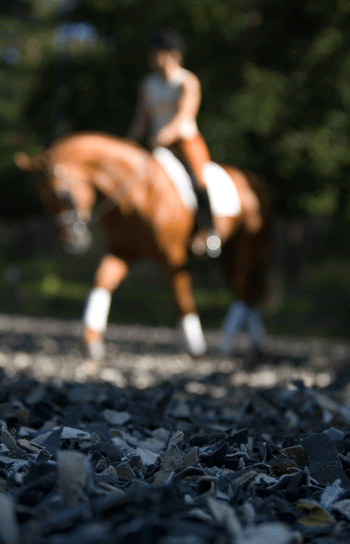The ground your horse trains and competes on has a major effect on his continued soundness as well as his performance. What footing is best? Riders and trainers in every discipline have opinions and preferences, but until recently there hasn’t been much science behind them. That’s now changing, thanks largely to research backed by the FEI (International Equestrian Federation). Two new FEI publications provide a good picture of the knowledge that’s come out of this work.

The Equine Surfaces White Paper sums up an array of research into the effects of arena surfaces on the bone and joint health of sporthorses. It’s the result of a four-year collaboration among experts from six universities, three equine research and testing centers and other groups in Sweden, Britain and the United States.
Some combination of shock absorption, shear resistance, hardness, deformation under and recovery from loading, density, consistency and other attributes is required for all horse sports, the white- paper authors write, but “a surface that is ideal for some uses might be inappropriate for other activities.” They discuss the footing qualities most important for dressage, jumping and other disciplines and review what’s known about the qualities of various footing materials—sand, grass, rubber, wood chips, synthetics and wax additives. Footing qualities can change dramatically with maintenance (or lack of it) and environmental conditions, the authors note, and they call for the development of standardized test methods for footing in the field as well as in the lab. They expect to update the paper as new findings come out. It’s available for download from the FEI website (www.fei.org).
Equestrian Surfaces: A Guide, also available for download from the FEI, is a practical handbook developed for anyone who builds or maintains a sporthorse arena or just wants to know more about what’s underfoot. The English-language version of a 2014 publication sponsored by the Swedish Equestrian Federation combines current scientific knowledge with know-how from arena specialists. There are chapters on training, the interaction between the hoof and the surface, surface properties and materials, environmental considerations, the building process, maintenance, arena testing and more.









